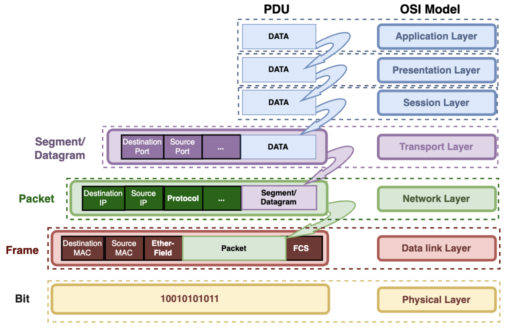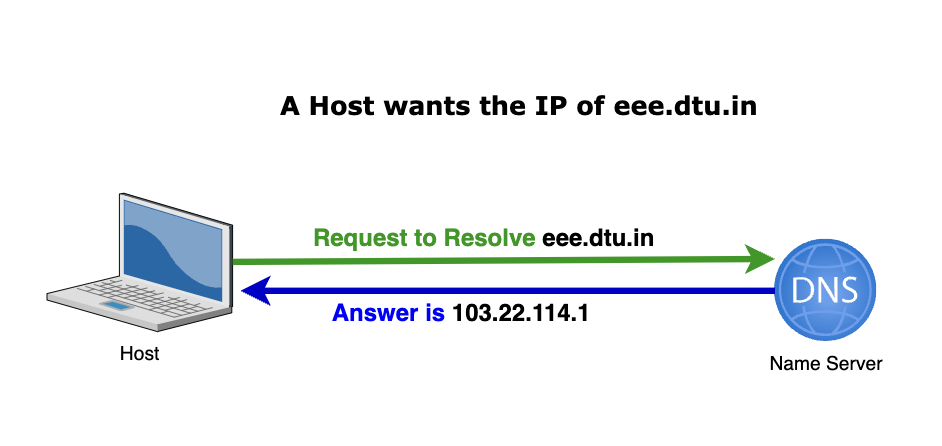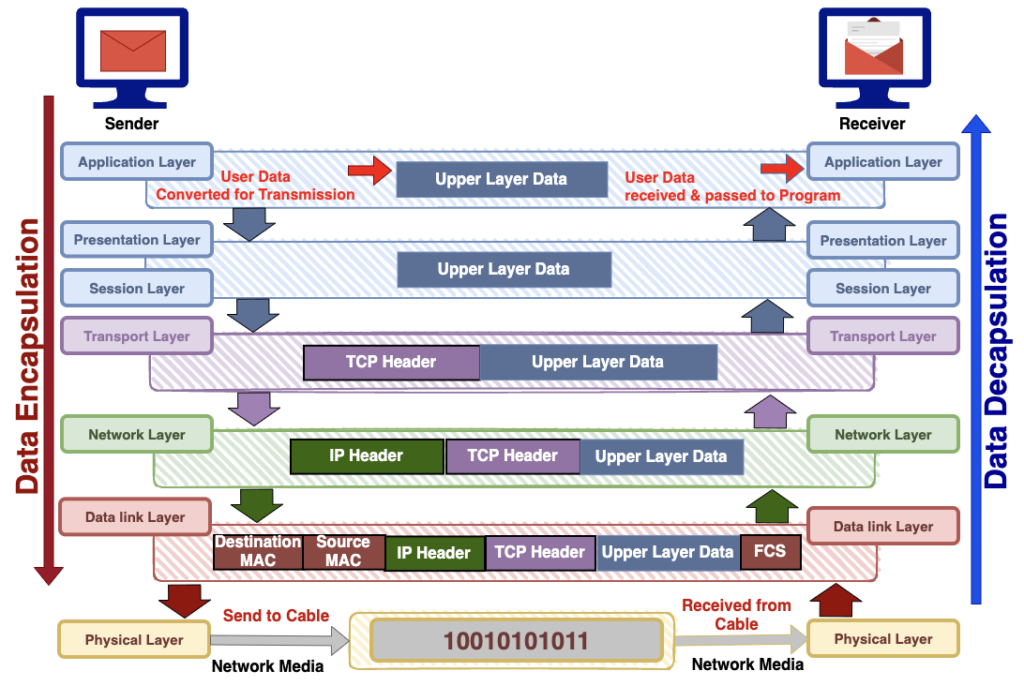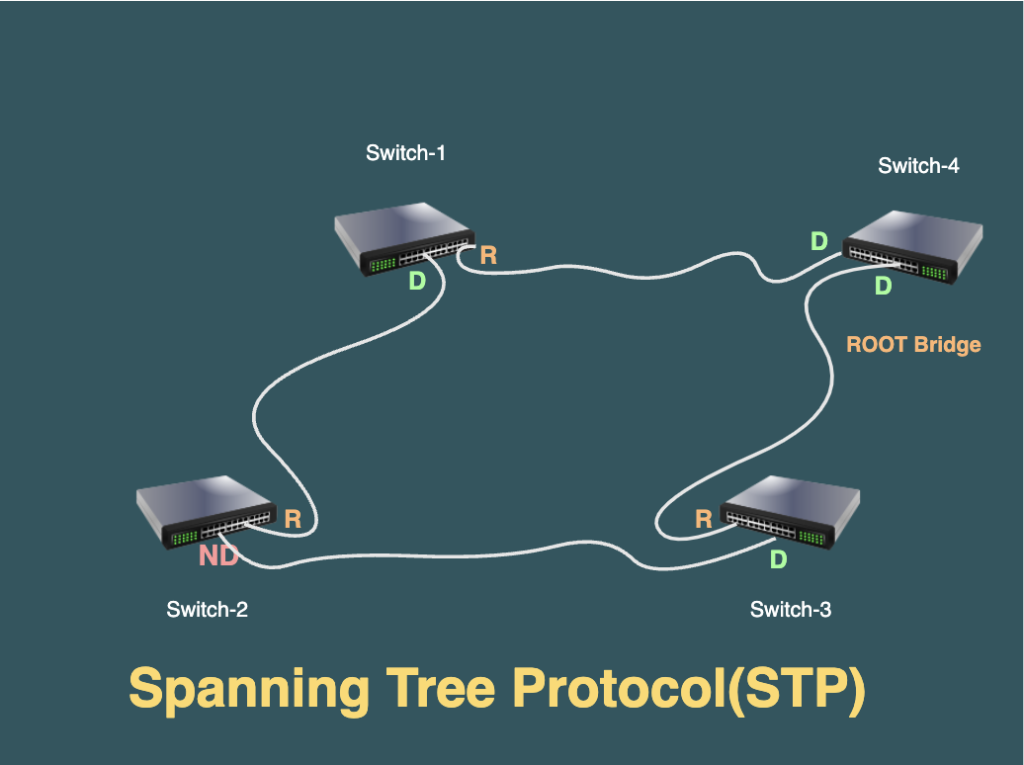The Significance of Protocol Data Units (PDUs)
What is Protocol Data Unit(PDU)?
In computer networks, each layer has its own information package called a Protocol Data Unit (PDU), containing protocol-specific control details. As it moves through layers, information is added or removed, and the PDU is identified differently at each layer to represent its function.
Here’s a summary of the Protocol Data Units (PDUs) for some commonly used network protocols:
Ethernet (Data Link Layer):
- PDU: Frame
- Contents:
- Source and destination MAC addresses
- Type/Length field
- Data payload
- Frame check sequence (FCS)
Internet Protocol (Network Layer):
- PDU: Packet
- Contents:
- Version and header length
- Type of service
- Total length
- Identification, flags, and fragment offset
- Time-to-Live (TTL)
- Protocol (e.g., TCP, UDP)
- Header checksum
- Source and destination IP addresses
- Options (if any)
- Data payload
Transmission Control Protocol (Transport Layer):
- PDU: Segment
- Contents:
- Source and destination port numbers
- Sequence and acknowledgment numbers
- Data offset, control flags (e.g., SYN, ACK)
- Window size
- Checksum
- Urgent pointer (if applicable)
- Options (if any)
- Data payload
User Datagram Protocol (Transport Layer):
- PDU: Datagram
- Contents:
- Source and destination port numbers
- Length
- Checksum
- Data payload

5. Session Layer (Layer 5):
- PDU: Data
- Contents:
- Establishment, maintenance, and termination of sessions or connections
- Synchronization, checkpointing, and recovery of data exchange
- Examples include dialog control, session management
- Manages sessions, allowing applications to establish, maintain, and terminate communication sessions
6. Presentation Layer (Layer 6):
- PDU: Data
- Contents:
- Translation, encryption, or compression of data
- Syntax and semantics of data are converted for interoperability
- Examples include data encryption, character set conversion
- Focus on ensuring that the data is in a format that can be easily interpreted by the application layer
7. Application Layer (Layer 7):
- PDU: Data
- Contents:
- Data generated by the application
- Examples include HTTP messages, email content, etc.
- The application layer is concerned with the user interface and communication between applications.
- Contents:
These are just a few examples, and there are many other protocols used in networking, each with its own PDU structure. The information provided above follows the OSI model, where each layer adds specific headers to the data payload as it traverses the network.

What does a Protocol Data Unit(PDU) contain?
In short, a protocol’s PDU is a specific format and function defined by the protocol rules. To be compliant, a system must both understand PDUs from others and create PDUs that others can recognize as valid.
PDUs typically consist of three parts:
- Protocol Header: This is like the ID card of the message, containing specific details. Most headers include fields for destination address and a source address. The length of these headers can vary, depending on the protocol.
- Protocol Body or Payload: Think of this as the main content of the message. It carries the actual information being sent by the protocol.
- Protocol Trailer: This is like a footer attached to the message, positioned after the payload. Trailers are more common in lower layers like the data link layer (Layer 2) of the networking protocol. In higher layers, the length of the PDU is usually indicated in a header field. For example, in the Ethernet protocol, a trailer includes a cyclic redundancy check (CRC) value for error checking.
Sometimes, protocols specify certain word lengths, which are basically groups of bits or bytes that help speed up processing. In order to meet these requirements, some parts of the header or Protocol Data Unit (PDU) may need extra bits, either zeros or ones, to fill in the gaps. Many networking protocols prefer handling data in 32-bit groups. So, if a PDU has less than 32 bits left, it might be extended with extra bits, known as padding, to align with this processing preference.




